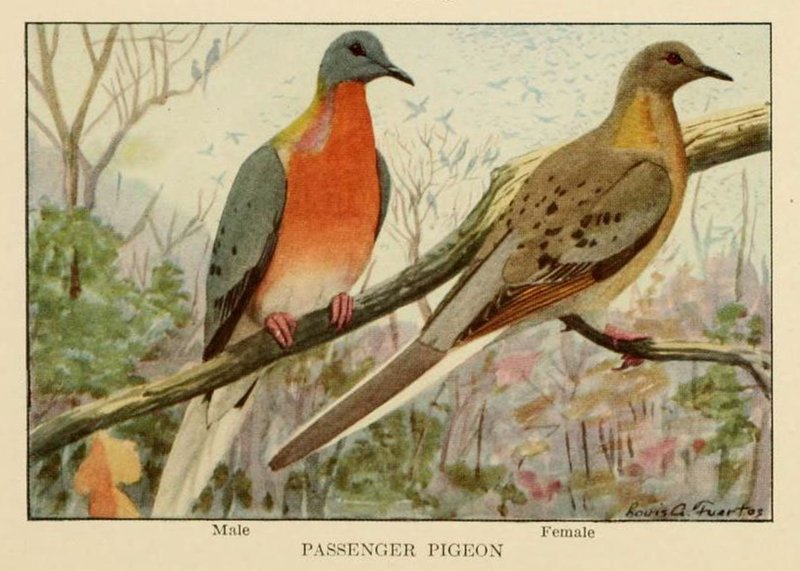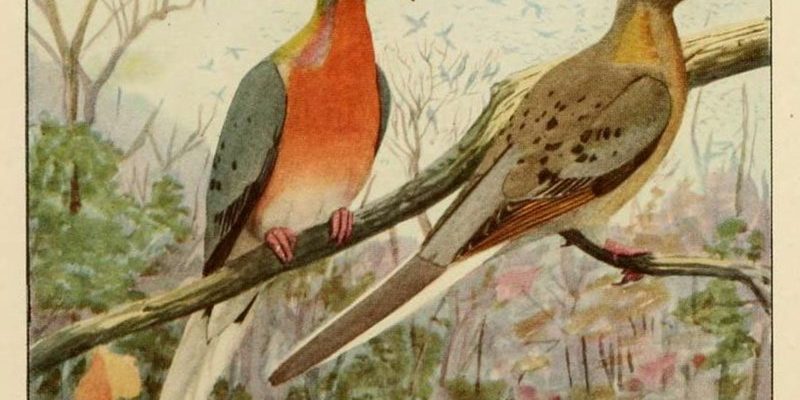
At times, the history of the passenger pigeon feels like a cautionary tale from a fairy tale book—almost too unbelievable to be true. They were once so plentiful that in the 19th century, people could reportedly hear their cooing from miles away. Imagine a concert of birds singing in unison, a true spectacle of nature! But due to overhunting and habitat loss, those melodious sounds turned into echoes of the past. Understanding this story offers us valuable lessons about wildlife conservation and the fragility of ecosystems.
The Rise and Fall of the Passenger Pigeon
The passenger pigeon, scientifically known as *Ectopistes migratorius*, was once one of the most abundant bird species in North America. Some estimates say there were billions—yes, billions—of them flying through the skies. Their flocks could darken the sky for hours and were a vital part of the ecosystem, helping to disperse seeds and maintain the health of forests.
As European settlers arrived in North America, the pigeons became targets for hunters. They were hunted not just for their meat, which was a popular food source, but also for sport. The advent of the telegraph made it easier for hunters to mass-shoot them, leading to a devastating decline in their population. It’s astonishing how quickly such a formidable species could diminish when faced with human exploitation.
By the late 1800s, the passenger pigeon’s numbers had plummeted dramatically. The last known wild passenger pigeon was spotted in 1910, and the last captive one, named Martha, died in 1914 at the Cincinnati Zoo. What once seemed like an endless supply of birds had vanished, illustrating how fragile life can be when it encounters human expansion.
The Importance of Conservation
So, why should we care about the extinction of the passenger pigeon? This tale serves as a critical reminder of the importance of conservation. It highlights how swiftly a species can disappear if we don’t take action. Understanding this is vital, especially in a world where many species are currently threatened or endangered due to similar human activities.
Conservation efforts are not just about saving individual species; they’re also about preserving entire ecosystems. When one species is lost, it can create a domino effect, affecting other animals and plants that rely on it for survival. The passenger pigeon’s extinction teaches us that every creature, no matter how small or seemingly unimportant, plays a role in the larger tapestry of life.
To avoid repeating history, it’s crucial we remain vigilant and proactive in our conservation efforts. Organizations around the globe are now working to protect endangered species, restore habitats, and create awareness about the importance of biodiversity.
Lessons for Today
What can we learn from the passenger pigeon? Well, first off, the need for sustainable practices in hunting and land use cannot be overstated. If we rely on natural resources without considering their limits, we risk losing them forever. It’s like taking out more than you put into a bank account; eventually, you’ll run dry.
Furthermore, education about wildlife and ecosystems is key. Understanding how species interact in their environments helps us appreciate the delicate balance that exists in nature. Picture a web: if one strand snaps, the entire structure is at risk.
Engaging communities in conservation efforts can also work wonders. Grassroots initiatives often bring awareness and encourage local involvement. Whether it’s through participating in bird-watching programs or supporting wildlife sanctuaries, every little bit helps.
Comparing to Other Endangered Species
When we think about endangered species today, many come to mind—like the Amur leopard and the Sumatran orangutan. Unlike the passenger pigeon, these animals still have a fighting chance, but they need our help. The plight of these creatures demonstrates the necessity of immediate action.
For instance, while the passenger pigeon faced extinction due to hunting, many current endangered species battle habitat loss due to urban development and climate change. Unlike the past, we have advanced technology and research to aid in conservation efforts, which can provide hope for species at risk.
One critical difference is the existence of international laws and agreements aimed at protecting endangered species. The Endangered Species Act in the United States, for example, was established to help prevent extinction. These frameworks create a safety net that the passenger pigeon never had.
What We Can Do
So, what can you do to help ensure we don’t lose more species? Here are a few simple actions you can take:
- Support Conservation Organizations: Donations to groups focused on wildlife conservation can make a significant impact.
- Spread Awareness: Talk about endangered species and their importance. The more people know, the more likely they are to care.
- Reduce Your Ecological Footprint: Make eco-friendly choices in your daily life, from reducing plastic use to supporting sustainable products.
- Participate in Local Conservation Efforts: Join clean-up days, tree planting, or wildlife monitoring projects in your area.
Even small changes in your lifestyle can contribute to larger conservation goals. Think of it as a ripple effect. Your actions, however modest, can inspire others to join you.
The story of the passenger pigeon is a tragic reminder of how quickly a species can disappear when faced with human impact. Its extinction underscores the pressing need for ongoing conservation efforts to protect the wildlife we still have. By learning from the past, supporting current initiatives, and making conscious choices, we can help create a future where no species has to face the same fate.
The next time you hear birds chirping outside, take a moment to appreciate their presence. Each one plays a role in our ecosystem and deserves a chance to thrive. After all, it’s our responsibility to ensure that future generations can also enjoy these wonders of nature.

